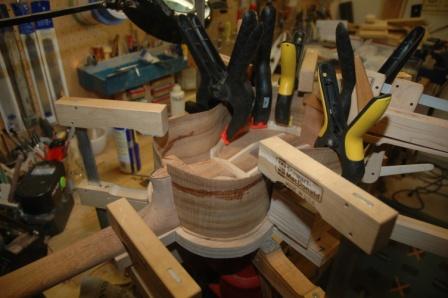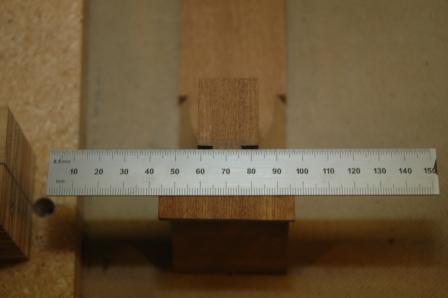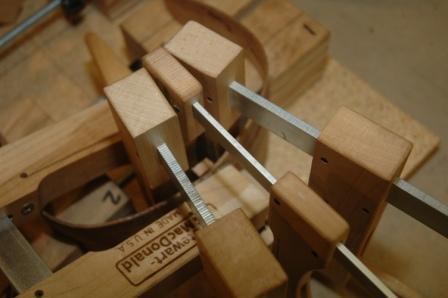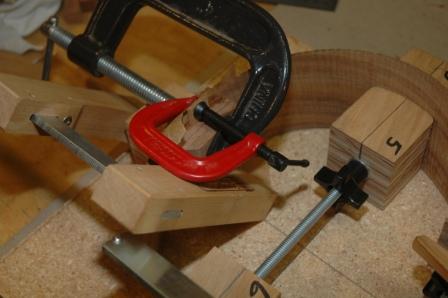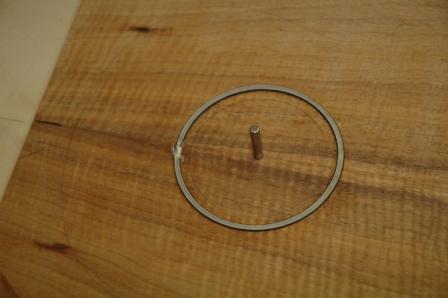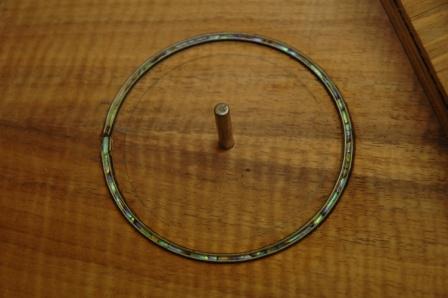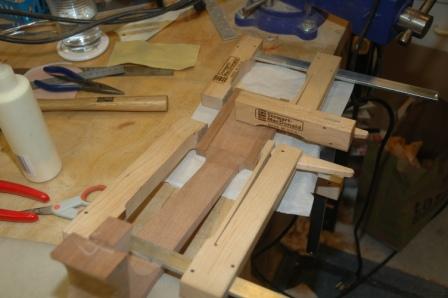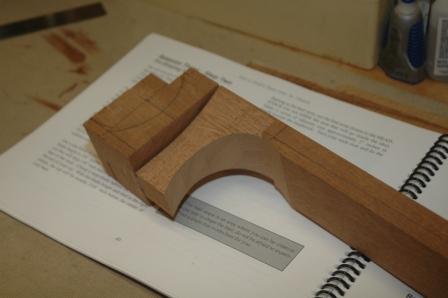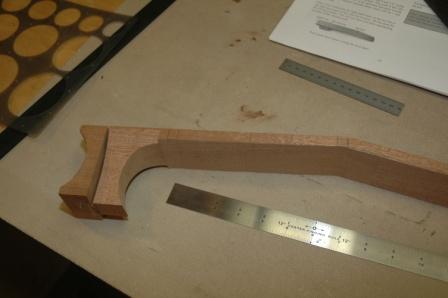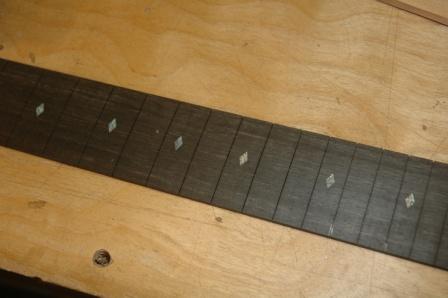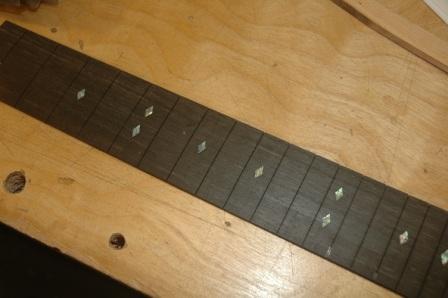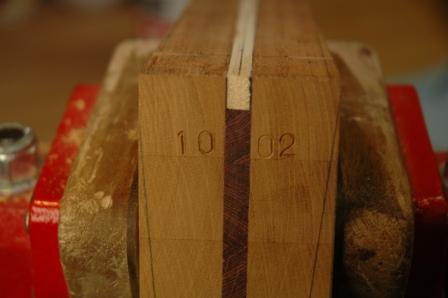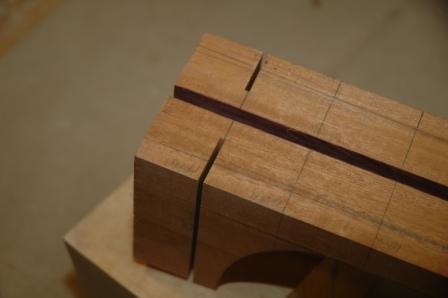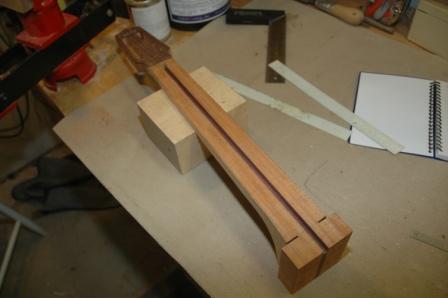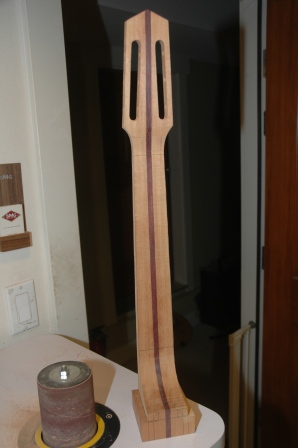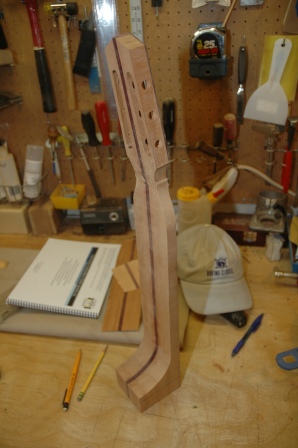Uke 1101 – Neck, Top, Sides Join
April 24, 2011
To recover from the wrong way heel slots, I filled with mahogany plates.
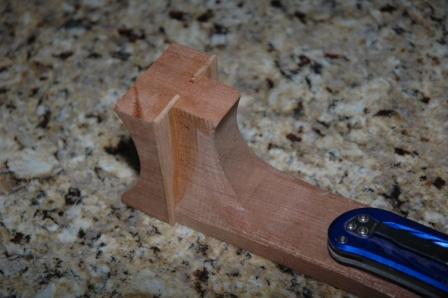
I had to carefully build a holding jig for the neck in the table saw which stabilized the neck while I drew it through the 5 degree angled blade. Slots came out well, and I spent time shaping the heel in preparation for joining the top to the neck.
The top of the neck is routed out to accommodate the thickness of the top and ensure a flat transition from the top of the neck and the face of the top. Center lines are matched, and the top is glued to the neck at the neck block portion of the neck.
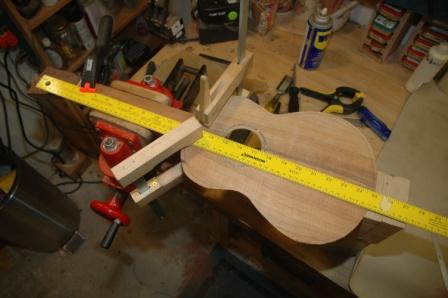
Once the joint is dry, it can be turned around and mounted onto the workboard. After several dry fit attempts, everything lined up well, and glue was applied to the neck slots and the glue line along the inside of the top where the sides meet. I probably should not have glued the slot, as I need to shim a wee bit of the sides to press against the heel for a tight fit. So, there is a little gap between the heel and the sides which I may be able to shim out, but probably not. The gap is very small, and will disappear when lacquered (or I can fill it).
The sides are clamped to the top, and while drying, the kerfing process can begin.
